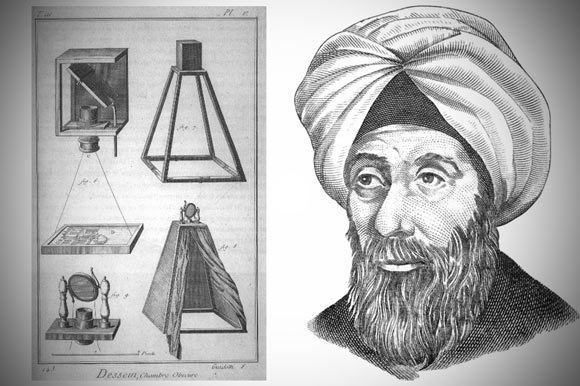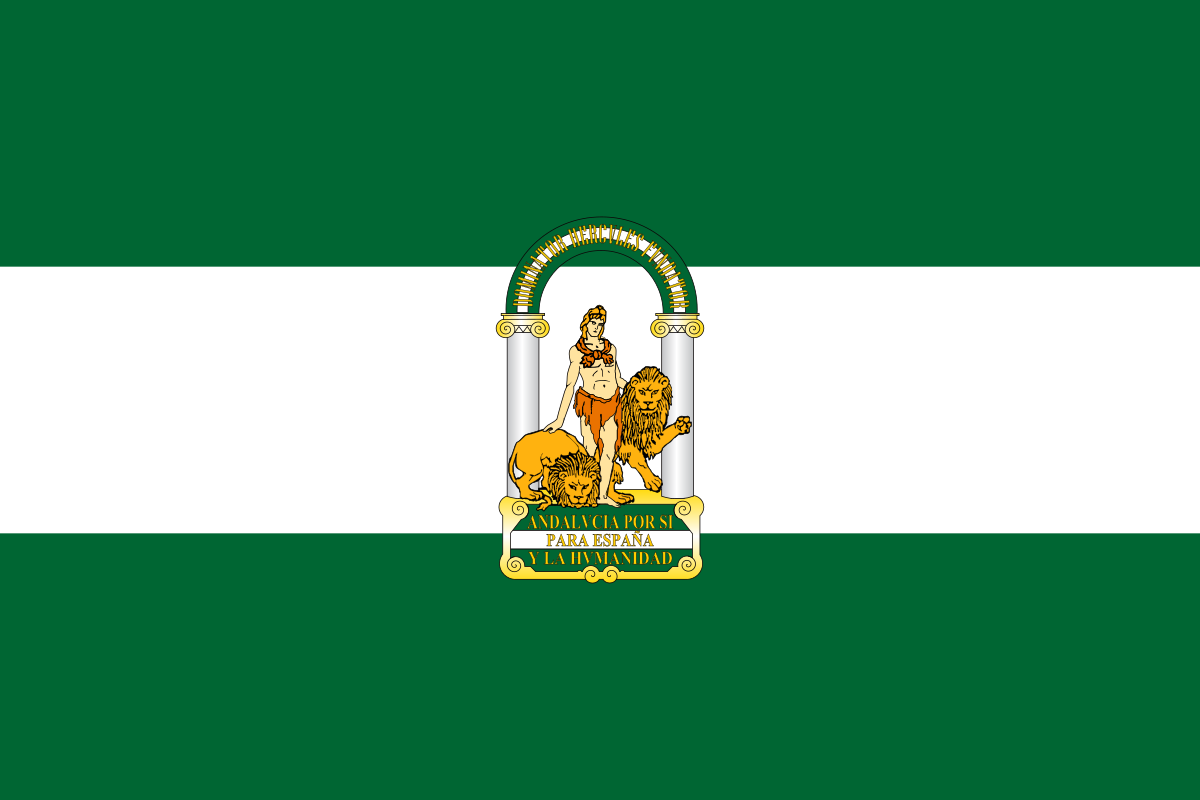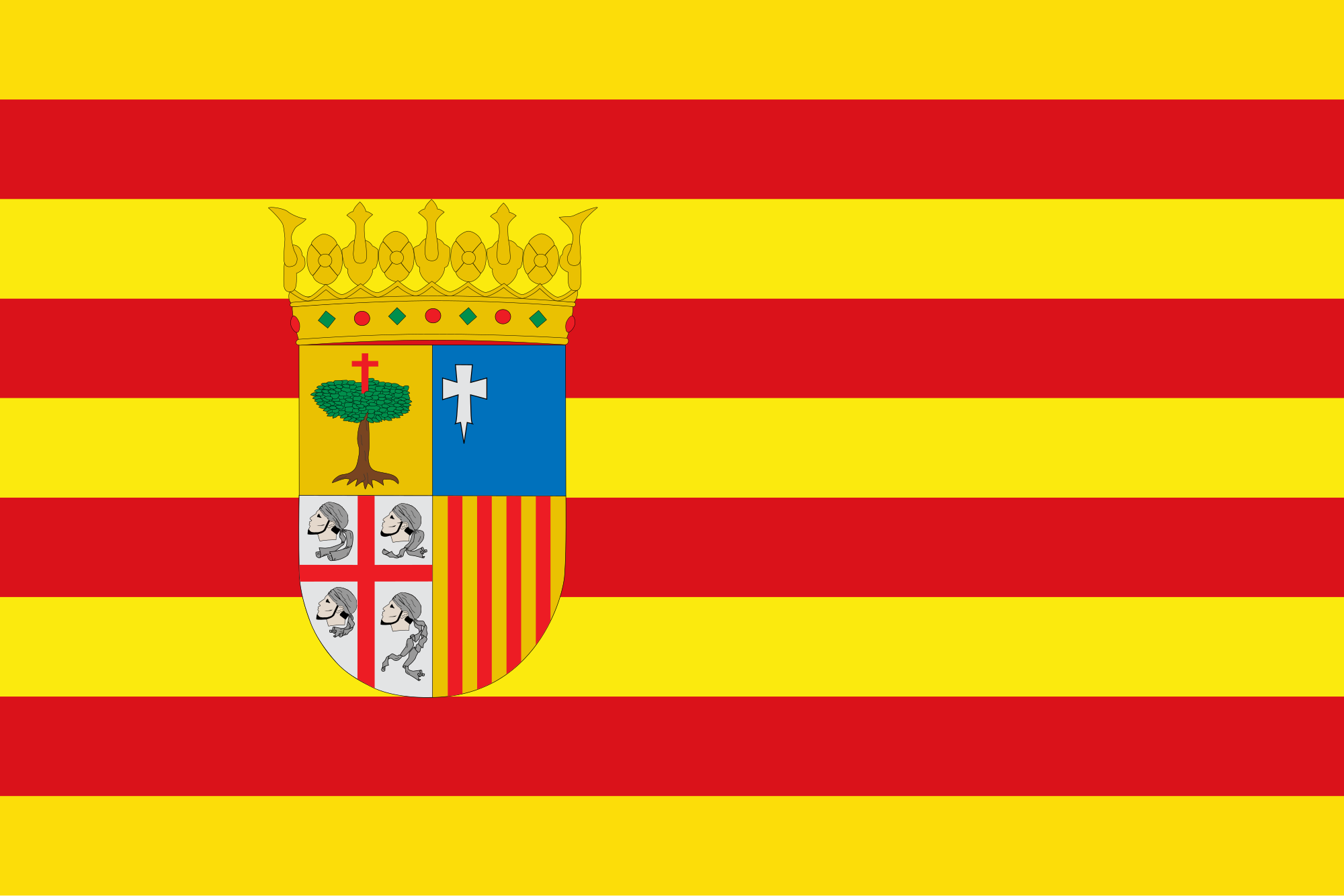
Deutsch-Chinesische Enzyklopädie, 德汉百科
 历史
历史

Das sogenannte Alexanderreich bezeichnet in der althistorischen Forschung jenes Großreich der Antike, das sich unter Alexander dem Großen im Laufe des Alexanderzugs herausgebildet hatte und in seiner vollen Größe von 324 bis etwa 319 v. Chr. bestand. Da Alexanders politische Stellung in einigen Gebieten unterschiedlich legitimiert war und er seine Herrschaft auch entsprechend regional verschieden ausübte, lässt sich diesem Staatsgebilde kein geographischer Raumbegriff außer dem Namen seines Herrschers zuordnen.
Das Alexanderreich basierte im Wesentlichen auf einer Personalunion von dreierlei verschiedenen Herrschaftsbereichen: Jenem von Makedonien, des Altpersischen Reichs und Ägyptens. Darüber hinaus hatte Alexander die Oberherrschaft über die meisten griechischen Städte im Hellenenbund von Korinth und einige barbarische Stämme des Balkans ausgeübt. Sein Reich erstreckte sich dabei über mindestens 19 Gebieten heutiger moderner Staaten (Griechenland, Mazedonien, Bulgarien, Türkei, Syrien, Jordanien, Israel, Libanon, Zypern, Ägypten, Libyen, Irak, Iran, Kuwait, Afghanistan, Turkmenistan, Tadschikistan, Usbekistan und Pakistan) und berührte einige weitere an ihren Peripherien (Ukraine, Rumänien, Albanien, Armenien, Aserbaidschan und Indien). Nach seinem Tod zerfiel sein Reich schließlich im Rahmen der Diadochenkriege und wurde unter seinen Nachfolgern, den Diadochen und Epigonen, aufgeteilt. Dabei bildete sich die hellenistische Staatenwelt heraus.
マケドニア王国(Μακεδονικό βασίλειο)は、紀元前7世紀に古代ギリシア人によって建国された歴史上の国家である。現在のギリシャ共和国西マケドニア地方・中央マケドニア地方の全域と、マケドニア共和国南東部ドイラン・ボグダンツィ・ゲヴゲリヤ及び南西部レセン・オフリド各基礎自治体の一部、ブルガリア・ブラゴエヴグラト州のギリシャとの国境地帯、アルバニアのポグラデツ県・コルチャ県・デヴォル県の一部にまたがる地域にあった。北西ギリシア方言群のひとつであるマケドニア方言を話した。
Macedonia (/ˌmæsɪˈdoʊniə/ (![]() listen)) or Macedon (/ˈmæsɪˌdɒn/; Greek: Μακεδονία, Makedonía), was an ancient kingdom on the periphery of Archaic and Classical Greece,[6] and later the dominant state of Hellenistic Greece.[7] The kingdom was founded and initially ruled by the royal Argead dynasty, which was followed by the Antipatrid and Antigonid dynasties. Home to the ancient Macedonians, the earliest kingdom was centered on the northeastern part of the Greek peninsula,[8] and bordered by Epirus to the west, Paeonia to the north, Thrace to the east and Thessaly to the south.
listen)) or Macedon (/ˈmæsɪˌdɒn/; Greek: Μακεδονία, Makedonía), was an ancient kingdom on the periphery of Archaic and Classical Greece,[6] and later the dominant state of Hellenistic Greece.[7] The kingdom was founded and initially ruled by the royal Argead dynasty, which was followed by the Antipatrid and Antigonid dynasties. Home to the ancient Macedonians, the earliest kingdom was centered on the northeastern part of the Greek peninsula,[8] and bordered by Epirus to the west, Paeonia to the north, Thrace to the east and Thessaly to the south.
Before the 4th century BC, Macedonia was a small kingdom outside of the area dominated by the great city-states of Athens, Sparta, and Thebes, and briefly subordinate to Achaemenid Persia.[3] During the reign of the Argead king Philip II (359–336 BC), Macedonia subdued mainland Greece and Thrace through conquest and diplomacy. With a reformed army containing phalanxes wielding the sarissa pike, Philip II defeated the old powers of Athens and Thebes in the Battle of Chaeronea in 338 BC. Philip II's son Alexander the Great, leading a federation of Greek states, accomplished his father's objective of commanding the whole of Greece when he destroyed Thebes after the city revolted. Pro-Macedonian Athenian oligarch, Philippides of Paiania was instrumental in the defeat of Chaeronea by assisting in king Philip's cause. He was prosecuted as a traitor known in the speech Hypereides against Philippides, known from Athenaeus[9]. During Alexander's subsequent campaign of conquest, he overthrew the Achaemenid Empire and conquered territory that stretched as far as the Indus River. For a brief period, his empire was the most powerful in the world – the definitive Hellenistic state, inaugurating the transition to a new period of Ancient Greek civilization. Greek arts and literature flourished in the new conquered lands and advances in philosophy, engineering, and science spread throughout much of the ancient world. Of particular importance were the contributions of Aristotle, tutor to Alexander, whose writings became a keystone of Western philosophy.
After Alexander's death in 323 BC, the ensuing wars of the Diadochi, and the partitioning of Alexander's short-lived empire, Macedonia remained a Greek cultural and political center in the Mediterranean region along with Ptolemaic Egypt, the Seleucid Empire, and the Kingdom of Pergamon. Important cities such as Pella, Pydna, and Amphipolis were involved in power struggles for control of the territory. New cities were founded, such as Thessalonica by the usurper Cassander (named after his wife Thessalonike of Macedon).[10] Macedonia's decline began with the Macedonian Wars and the rise of Rome as the leading Mediterranean power. At the end of the Third Macedonian War in 168 BC, the Macedonian monarchy was abolished and replaced by Roman client states. A short-lived revival of the monarchy during the Fourth Macedonian War in 150–148 BC ended with the establishment of the Roman province of Macedonia.
The Macedonian kings, who wielded absolute power and commanded state resources such as gold and silver, facilitated mining operations to mint currency, finance their armies and, by the reign of Philip II, a Macedonian navy. Unlike the other diadochi successor states, the imperial cult fostered by Alexander was never adopted in Macedonia, yet Macedonian rulers nevertheless assumed roles as high priests of the kingdom and leading patrons of domestic and international cults of the Hellenistic religion. The authority of Macedonian kings was theoretically limited by the institution of the army, while a few municipalities within the Macedonian commonwealth enjoyed a high degree of autonomy and even had democratic governments with popular assemblies.
Le royaume de Macédoine (en grec ancien Μακεδονία / Makédonia) est un État grec antique situé au nord de la Grèce, correspondant aujourd'hui principalement à la Macédoine grecque. Il est centré sur la partie nord-est de la péninsule grecque, bordé par l’Épire à l'ouest, la Péonie au nord, la Thrace à l'est et la Thessalie au sud. Royaume de la Grèce aux époques archaïque et classique, il devient l'État dominant du monde grec durant l'époque hellénistique.
L'existence du royaume est attestée au tout début du VIIe siècle av. J.-C. avec à sa tête la dynastie des Argéades. Il connait un formidable essor sous le règne de Philippe II, qui étend sa domination sur la Grèce continentale en évinçant Athènes et la ligue chalcidienne pour ensuite fonder la Ligue de Corinthe. Son fils Alexandre le Grand est à l'origine de la conquête de l'immense empire perse et de l'expansion de l'hellénisme en Asie à la fin du IVe siècle av. J.-C. À son apogée, le royaume de Macédoine, avec ses dépendances, s’étendait du bassin méditerranéen à la vallée de l’Indus, en passant par Thèbes en Égypte, par Babylone en Mésopotamie et par Samarcande en Sogdiane. Après la mort d'Alexandre le Grand, la Macédoine passe brièvement sous la tutelle des Antipatrides dans le contexte des guerres des diadoques. En 277, la royauté échoit à Antigone II Gonatas, qui installe la dynastie des Antigonides, laquelle règne jusqu'en 168, lorsque la Macédoine est conquise par les Romains. En 146, la Macédoine devient une province romaine.
Les Macédoniens sont apparentés aux Grecs, mêlés à des peuples thraco-illyriens « indigènes » ; ils parlent l’ancien macédonien, une langue hellénique différente du grec classique. Par ailleurs le pays n'est pas organisé autour de cités indépendantes mais autour d'une aristocratie foncière dirigée par le roi des Macédoniens (et non de Macédoine), expliquant que les Grecs de l'époque classique puissent les considérer comme des « barbares ».
Il regno di Macedonia (in greco antico: Μακεδονία, Makedonìa) è stato un regno del mondo antico, che si trovava nella parte meridionale della Penisola balcanica; originariamente il suo territorio corrispondeva all'omonima regione collocata nella parte nord-orientale dell'antica Grecia[1] tra l'Epiro a ovest, la Tracia a est, la Peonia a nord e la Tessaglia a sud.
Fondato, secondo la tradizione, agli inizi dell'VIII secolo a.C. dal mitico re Carano, con Filippo II (che fu sovrano dal 359 al 336 a.C.), il regno di Macedonia iniziò la sua ascesa da piccolo stato periferico fino a raggiungere il dominio di tutta la Grecia. Grazie al figlio di Filippo, Alessandro Magno (re dal 336 a.C. al 323 a.C.), il regno si trasformò in un impero che si estendeva dalla penisola ellenica fino al fiume Indo e comprendeva i territori di quello che era stato l'Impero achemenide.
Alla morte di Alessandro Magno, l'impero macedone si disgregò nei regni ellenistici, governati dai Diadochi, i "successori" del re. Alcuni di essi diedero inizio, nelle regioni da loro governate, a delle dinastie di stirpe macedone che avrebbero regnato per secoli, come la dinastia seleucide nell'omonimo impero, che perdurò fino alla deposizione di Filippo II Filoromeo per opera di Pompeo nel 63 a.C.), e la dinastia tolemaica in Egitto, che rimase sul trono sino alla morte di Cleopatra nel 30 a.C.
Alla morte di Alessandro IV, figlio del Magno ed ultimo rappresentante della dinastia argeade, il regno di Macedonia fu governato dapprima dalla dinastia antipatride e poi da quella antigonide, pur con le brevi parentesi dei regni di Pirro, Lisimaco e Tolomeo Cerauno.
Con la battaglia di Pidna (168 a.C.), il regno fu conquistato dai Romani, che lo annetterono definitivamente nel 148 a.C., dopo aver domato la breve riscossa dell'ultimo re macedone Andrisco (Filippo VI) e trasformato la Macedonia in una provincia della repubblica romana.
El Reino de Macedonia fue un Estado griego de la antigüedad clásica y de la helenística, en el norte de la actual Grecia, bordeada por el Reino de Epiro en el oeste y la región de Tracia en el este. Este reino se consolidó durante el siglo V a. C. y experimentó un importante ascenso de su poder durante el siglo IV a. C. con el gobierno de Filipo II, que convirtió Macedonia en la principal potencia de Grecia. Su hijo Alejandro Magno (Alejandro III ) conquistó la mayor parte del mundo conocido, inaugurando el Período Helenístico de la historia griega.
Macedonia se divide tradicionalmente en dos grandes regiones, la Alta y la Baja Macedonia. Era un país de trigo y pastos, de aldeanos y jinetes, y con una costa marítima reducida. Los historiadores creen que sus habitantes eran griegos de dialecto dórico, al igual que los de la región de Epiro, Rodas y el Peloponeso, y que hablaban un dialecto griego muy cercano al de estas regiones (véase Antiguo idioma macedonio).
Македо́ния (греч. Μακεδονία) — античное греческое государство на Балканском полуострове со столицей в Эгесе, на западе граничившее с государством Эпир, на востоке — с Фракией, на юге — с Фессалией. Отсюда Александр Македонский начал поход на Персию.

阿尔弗雷德·伯恩哈德·诺贝尔(瑞典语:Alfred Bernhard Nobel,/noʊˈbɛl/;瑞典语:[ˈalfrɛd nʊˈbɛlː] (![]() 聆听),1833年10月21日—1896年12月10日)是瑞典著名发明家、企业家、化学家、化学工程师、武器制造商和硝酸甘油炸药发明者。他曾拥有主要生产武器与钢铁的波佛斯公司。在他的遗嘱中,他利用其庞大财富创立了诺贝尔奖,各种诺贝尔奖项均以他的名字命名。
聆听),1833年10月21日—1896年12月10日)是瑞典著名发明家、企业家、化学家、化学工程师、武器制造商和硝酸甘油炸药发明者。他曾拥有主要生产武器与钢铁的波佛斯公司。在他的遗嘱中,他利用其庞大财富创立了诺贝尔奖,各种诺贝尔奖项均以他的名字命名。
Alfred Bernhard Nobel ![]() anhören?/i [nɔˈbɛl ] (* 21. Oktober 1833 in Stockholm; † 10. Dezember 1896 in Sanremo, Italien) war ein schwedischer Chemiker und Erfinder. Ihm wurden insgesamt 355 Patente erteilt.
anhören?/i [nɔˈbɛl ] (* 21. Oktober 1833 in Stockholm; † 10. Dezember 1896 in Sanremo, Italien) war ein schwedischer Chemiker und Erfinder. Ihm wurden insgesamt 355 Patente erteilt.
Nobel ist der Erfinder des Dynamits sowie Stifter und Namensgeber des Nobelpreises. Das chemische Element Nobelium wurde nach ihm benannt. Auch die Pflanzengattung Nobeliodendron O.C.Schmidt aus der Familie der Lorbeergewächse (Lauraceae) ist nach ihm benannt.[1]
在世界科学史上,有这样一位伟大的科学家:他不仅把自己的毕生精力全部贡献给了科 学事业,而且还在身后留下遗嘱,把自己的遗产全部捐献给科学事业,用以奖掖后人,向科学的高峰努力攀登。今天,以他的名字命名的科学奖,已经成为举世瞩目 的最高科学大奖。他的名字和人类在科学探索中取得的成就一道,永远地留在了人类社会发展的文明史册上。这位伟大的科学家,就是世人皆知的瑞典化学家阿尔弗 雷德·伯恩哈德·诺贝尔。
诺贝尔1833年出生于瑞典首都斯德哥尔摩。诺贝尔的父亲倾心于化学研究,尤其喜欢研究炸药。受父亲的影响,诺贝尔从小就表现出顽强勇敢的性格。他经常和父亲一起去实验炸药,几乎是在轰隆轰隆的爆炸声中度过了童年。诺贝尔到了8岁才上学,但只读了一年书,这也是他所受过的唯一的正规学校教育。

阿兰布拉(阿拉伯语:الحمراء,拉丁化:Al Ħamrā';即红色城堡、红宫,西班牙语:Alhambra,发音是“阿兰布拉”)是一个位于西班牙南部城市格拉纳达的于摩尔王朝时期修建的古代清真寺—宫殿—城堡建 筑群。阿兰布拉最初的原址建有要塞称为Al-Andalus,宫殿为原格拉纳达摩尔人国王所建,现在则是一处穆斯林建筑、文化博物馆。1232年在老城改 建的基础上逐步形成现存规模。宫墙外围有30米高的石砌城墙。有两组主要建筑群:一组为“石榴院”,另一组为“狮子院”。
统治格拉纳达的奈斯尔王朝(Nasrid dynasty)的第一代统治者穆罕穆德一世(Mohammed I ibn Nasr)修建了阿兰布拉,因穆罕穆德被称为“红人之子”,这座宫殿又叫作“红宫”。其作为伊斯兰教世俗建筑与造园技艺完美结合的建筑名作以及阿拉伯式宫殿庭院建筑的优秀代表,1984年被选入联合国教科文组织世界文化遗产名录之中。
Die Alhambra [aˈlambɾa] ist eine bedeutende Stadtburg (kasbah) auf dem Sabikah-Hügel von Granada in Spanien, die als eines der bedeutendsten Beispiele des maurischen Stils der islamischen Kunst gilt. Die Alhambra ist eine der meistbesuchten Touristenattraktionen Europas und seit 1984 Weltkulturerbe. Die Burganlage ist etwa 740 m lang und bis zu 220 m breit. Im Osten ist ihr der Sommerpalast Generalife vorgelagert.
アルハンブラ宮殿(アルハンブラきゅうでん、スペイン語: la Alhambra ラランブラ)は、スペインのアンダルシア州グラナダ県グラナダ市南東の丘の上に位置する城塞・宮殿である。
ウマの背のような形をした丘は頂上部が長さ 740 メートル、幅 205 メートルにわたって平坦になっており、夏場非常に暑いと言われるグラナダの中でもとても涼しい場所に位置している。
宮殿と呼ばれているが城塞の性質も備えており、その中に住宅、官庁、軍隊、厩舎、モスク、学校、浴場、墓地、庭園といった様々な施設を備えていた。その大部分はイベリア半島最後のムスリム政権・ナスル朝の時代に建設され、スルタン(王)の居所として用いられた。14世紀の学者アフマド・アル・ウマリーの地理書によると、スルタンは月曜と木曜にアルハンブラのある丘の上で、人民に対し、コーランの10章とムハンマドの言行録の一部を朗読したとされる。
建築の材料には、レンガ、木材、練土などのもろいものが多く、彫刻を施した石材などは最低限しか使用されていない。アルハンブラ宮殿の中心は、いくつかの建造物に囲まれた中庭(パティオ)におかれ、他のイスラーム建築の例に倣っている。
建物は白を基調としているが、アルハンブラとはアラビア語で「赤い城塞」を意味するアル=カルア・アル=ハムラー (القلعة الحمراء, al-qal‘ah al-ḥamrā') と呼ばれていたものが、スペイン語において転訛したものである[1]。この名称の由来については、城塞周辺の土地の土壌が赤いため、あるいは建築に使われた煉瓦の色であるとか、宮殿が赤い漆喰で覆われていたからなど諸説あるが、イブン・アルハティブは、アルハンブラ宮殿増築の時、夜を通してかがり火を燃やして工事したためグラナダ平野から見上げた宮殿は赤く染まって見えたことからこのように呼ばれたという説を唱え、これが一般的な説として通用している。[要出典]スペイン語表記ではAlhambraと綴る。
The Alhambra (/ælˈhæmbrə/; Spanish: [aˈlambɾa]; Arabic: الْحَمْرَاء [ʔælħæmˈɾˠɑːʔ], Al-Ḥamrā, lit. "The Red One",[Note 1][Note 2] the complete Arabic form of which was Qalat Al-Hamra)[Note 3] is a palace and fortress complex located in Granada, Andalusia, Spain. It was originally constructed as a small fortress in AD 889 on the remains of Roman fortifications, and then largely ignored until its ruins were renovated and rebuilt in the mid-13th century by the Nasrid emir Mohammed ben Al-Ahmar of the Emirate of Granada, who built its current palace and walls. It was converted into a royal palace in 1333 by Yusuf I, Sultan of Granada.[1] After the conclusion of the Christian Reconquista in 1492, the site became the Royal Court of Ferdinand and Isabella (where Christopher Columbus received royal endorsement for his expedition), and the palaces were partially altered in the Renaissance style. In 1526 Charles I & V commissioned a new Renaissance palace better befitting the Holy Roman Emperor in the revolutionary Mannerist style influenced by Humanist philosophy in direct juxtaposition with the Nasrid Andalusian architecture, but it was ultimately never completed due to Morisco rebellions in Granada.
Alhambra's last flowering of Islamic palaces were built for the last Muslim emirs in Spain during the decline of the Nasrid dynasty, who were increasingly subject to the Christian Kings of Castile. After being allowed to fall into disrepair for centuries, the buildings occupied by squatters, Alhambra was rediscovered following the defeat of Napoleon, who had conducted retaliatory destruction of the site. The rediscoverers were first British intellectuals and then other north European Romantic travelers. It is now one of Spain's major tourist attractions, exhibiting the country's most significant and well-known Islamic architecture, together with 16th-century and later Christian building and garden interventions. The Alhambra is a UNESCO World Heritage Site and the inspiration for many songs and stories.[2]
Moorish poets described it as "a pearl set in emeralds," an allusion to the colour of its buildings and the woods around them.[3] The palace complex was designed with the mountainous site in mind and many forms of technology were considered. The park (Alameda de la Alhambra), which is overgrown with wildflowers and grass in the spring, was planted by the Moors with roses, oranges, and myrtles; its most characteristic feature, however, is the dense wood of English elms brought by the Duke of Wellington in 1812. The park has a multitude of nightingales and is usually filled with the sound of running water from several fountains and cascades. These are supplied through a conduit 8 km (5.0 mi) long, which is connected with the Darro at the monastery of Jesus del Valle above Granada.[4]
Despite long neglect, willful vandalism, and some ill-judged restoration, the Alhambra endures as an atypical example of Muslim art in its final European stages, relatively uninfluenced by the direct Byzantine influences found in the Mezquita of Córdoba. The majority of the palace buildings are quadrangular in plan, with all the rooms opening on to a central court, and the whole reached its present size simply by the gradual addition of new quadrangles, designed on the same principle, though varying in dimensions, and connected with each other by smaller rooms and passages. Alhambra was extended by the different Muslim rulers who lived in the complex. However, each new section that was added followed the consistent theme of "paradise on earth". Column arcades, fountains with running water, and reflecting pools were used to add to the aesthetic and functional complexity. In every case, the exterior was left plain and austere. Sun and wind were freely admitted. Blue, red, and a golden yellow, all somewhat faded through lapse of time and exposure, are the colors chiefly employed.[4]
The decoration consists for the upper part of the walls, as a rule, of Arabic inscriptions—mostly poems by Ibn Zamrak and others praising the palace—that are manipulated into geometrical patterns with vegetal background set onto an arabesque setting ("Ataurique"). Much of this ornament is carved stucco (plaster) rather than stone. Tile mosaics ("alicatado"), with complicated mathematical patterns ("tracería", most precisely "lacería"), are largely used as panelling for the lower part. Similar designs are displayed on wooden ceilings (Alfarje).[4] Muqarnas are the main elements for vaulting with stucco, and some of the most accomplished dome examples of this kind are in the Court of the Lions halls. The palace complex is designed in the Nasrid style, the last blooming of Islamic Art in the Iberian Peninsula, that had a great influence on the Maghreb to the present day, and on contemporary Mudejar Art, which is characteristic of western elements reinterpreted into Islamic forms and widely popular during the Reconquista in Spain.
L'Alhambra (en arabe : الْحَمْرَاء, Al-Ḥamrā' , « la rouge ») de Grenade en Andalousie, est un ensemble palatial constituant l'un des monuments majeurs de l'architecture islamique. Acropole médiévale la plus majestueuse du monde méditerranéen, située sur le plateau de la Sabika qui domine la ville, elle se compose essentiellement de quatre parties incluses dans son enceinte fortifiée : l'Alcazaba, les palais nasrides, le Généralife , ses jardins, et le palais de Charles Quint.
C'est avec la Grande mosquée de Cordoue le plus prestigieux témoin de la présence musulmane en Espagne du VIIIe au XVe siècle. Leurs caractères sont d'ailleurs opposés : à la sobriété grandiose du monument religieux représentatif de la première architecture islamique, s'oppose l'exubérance de la dernière manière hispano-mauresque : celle-ci s'exprime en effet dans les palais des derniers souverains nasrides, alors en pleine décadence, et qui disparaîtront bientôt lors des derniers assauts de la Reconquista.
L'Alhambra è un complesso palaziale andaluso a Granada. Etimologicamente, Alhambra in arabo è "al-Ḥamrā'" (la Rossa, Arabo الحمراء), dal momento che il suo nome intero era Qalʿat al-ḥamrāʾ (Cittadella rossa).
Secondo alcune versioni il nome veniva dal colore rosato delle mura che circondavano l'Alhambra. L'Alhambra è una vera città murata (medina) che occupa la maggior parte del colle della Sabika, mentre per parte sua Granada fruiva di un altro sistema di mura protettive di cinta. Pertanto l'Alhambra poteva funzionare in modo autonomo rispetto a Granada. Nell'Alhambra vi erano tutti i servizi propri necessari agli abitanti che vi vivevano: moschee, scuole, botteghe e altro.
Nel 1238 fece il suo ingresso a Granada dalla Porta di Elvira, per occupare il Palazzo del Gallo del Vento, Muḥammad ibn Naṣr (noto anche come Naẓar), chiamato al-Ḥamar, "Il Rosso", perché aveva la barba di colore rossiccio, fondatore della dinastia nasride del Sultanato di Granada.
Quando Muḥammad ibn Naṣr entrò trionfatore a Granada, la popolazione lo accolse al grido di Benvenuto al vincitore per la grazia di Dio (marhaban li-l-Nāṣir), al quale egli rispose dicendo: Non v'è altro vincitore se non Dio (wa lā ghālib illā Allāh). Questo è il motto dello stemma nasride ed è scritto in tutta l'Alhambra. Muḥammad ibn Naṣr fece edificare il primo nucleo del palazzo. Suo figlio Muhammad II, che fu amico di Alfonso X di Castiglia, lo fortificò. Nel 1492, con la conquista di Granada da parte dei Re Cattolici, l'Alhambra passò ad essere palazzo reale dei re di Spagna e questo salvò il complesso dalla distruzione patita invece da tanti altri monumenti islamici a seguito della Reconquista.
Lo stile granadino nell'Alhambra rappresenta il punto supremo raggiunto dall'arte andalusa, che non si realizzò fino alla metà del secolo XIV con Yusuf I e Muhammad V nel 1333 e 1354.
Il Comitato del patrimonio mondiale dell'UNESCO ha dichiarato l'Alhambra e il Generalife di Granada Patrimonio Culturale dell'Umanità nella sua sessione del giorno 2 novembre 1984.
È stata indicata tra i 21 candidati finalisti per essere indicata come una delle sette meraviglie del mondo moderno. Il complesso copre più di 100.000 m² di superficie.
La Alhambra es una ciudad palatina andalusí situada en Granada, en la comunidad autónoma de Andalucía, España. Consiste en un conjunto de palacios, jardines y fortaleza (alcázar o al-qasr القصر) que albergaba una verdadera ciudadela dentro de la propia ciudad de Granada, que servía como alojamiento al monarca y a la corte del Reino nazarí de Granada. Su verdadero atractivo, como en otras obras musulmanas de la época, no solo radica en los interiores, cuya decoración está entre las cumbres del arte andalusí, sino también en su localización y adaptación, generando un paisaje nuevo pero totalmente integrado con la naturaleza preexistente. En 2016 fue el segundo monumento más visitado de España, por detrás del Templo Expiatorio de la Sagrada Familia de Barcelona,2 recibiendo la cifra histórica de 2 615 188 visitantes.3
Альгáмбра (исп. Alhambra, от араб. الحمراء аль-хамра — «красная»[3]) — архитектурно-парковый ансамбль, расположенный на холмистой террасе в восточной части города Гранада в Южной Испании. Основное развитие получил во времена правления мусульманской династии Насридов (1230—1492), при которых Гранада стала столицей Гранадского эмирата на Иберийском полуострове, а Альгамбра — их резиденцией (сохранившиеся дворцы относятся преимущественно к XIV веку). В состав обширного комплекса, заключенного в крепостные стены с башнями, входили также мечети, жилые дома, бани, сады, склады, кладбище. В настоящее время является музеем исламской архитектуры.
Внутренние дворики, переходы, фонтаны и водоёмы прекрасно сочетаются друг с другом. Керамические изразцы, резьба по камню и дереву, причудливые растительные орнаменты и арабская вязь образуют пышное декоративное убранство арок, сводов, изящных столбиков, стройных колонн и резных узорчатых окон. Многие считают Альгамбру высшим достижением мавританского искусства в Западной Европе.
Свет и вода играют важную роль в общей композиции. В уголке парка, спланированном террасами, журчит вода. Она пенится в каскадах, сверкает брызгами фонтанов, резво бежит по каналам и льётся, наполняя пруды и водоёмы. Всё это — в окружении кипарисовых аллей, апельсиновых деревьев, цветущих клумб на фоне покрытых вечными снегами горных вершин и ярко-голубого неба.

阿布·阿里·哈桑·伊本·哈桑·伊本·海什木(阿拉伯语:محمد بن الحسن بن الحسن بن الهيثم أبو على البصري,罗马化:Abū ʿAlī al-Ḥasan ibn al-Ḥasan ibn al-Haytham,965年—1040年)是阿拉伯学者、物理学家、数学家,其名在西文中又写作Al Hazen,中文译作“海桑”、“哈金”等。有大量著作和被现代科学证明了的科学发现,尤其在光学研究方面有突出成就。
Alhazen oder Alhazan (arabisch أبو علي الحسن بن الهيثم Abu Ali al-Hasan ibn al-Haitham, DMG Abū ʿAlī al-Ḥasan bin al-Haiṯam, verkürzt auch Ibn al-Haiṯam[1] und Ibn al-Heithem, persisch ابن هيثم, DMG Ibn Haiṯam, latinisiert Alhacen, Avennathan oder Avenetan, geboren um 965 in Basra; gestorben nach 1040 in Kairo),[2][3] war ein Mathematiker, Optiker und Astronom. Er verfasste grundlegende Beiträge zur Optik, Astronomie, Mathematik und Meteorologie.[4]

Die Carnac-Steine (bretonisch: Steudadoù Karnag) sind eine außergewöhnlich dichte Ansammlung megalithischer Stätten an der Südküste der Bretagne im Nordwesten Frankreichs, die aus Steinreihen, Dolmen (Steingräbern), Tumuli (Grabhügeln) und einzelnen Menhiren (stehenden Steinen) bestehen. Mehr als 3 000 prähistorische stehende Steine wurden aus lokalem Granit gehauen und von den vorkeltischen Bewohnern der Bretagne errichtet und bilden die größte derartige Sammlung der Welt[1]. Die meisten der Steine befinden sich in der bretonischen Gemeinde Carnac, einige östlich davon in der Nachbargemeinde La Trinité-sur-Mer. Die Steine wurden irgendwann in der Jungsteinzeit errichtet, wahrscheinlich um 3300 v. Chr., einige könnten aber auch aus der Zeit um 4500 v. Chr. stammen.
卡纳克巨石林(法语:Alignements de Carnac)是位于法国布列塔尼卡纳克村周边的非常紧密的石器时代遗址的总称,由石阵、支石墓、岩冢和单独树立的独石组成。当地有3000多块史前布列塔尼凯尔特人居民树立的石头,这些石头均产于本地,是世界上最大的史前石阵。当地的传说说这些排列笔直的石阵是被梅林石化了的罗马军团,是亚瑟王传说的一个当地版本之一。大多数这些石头树立在卡纳克境内,少数位于东部的临镇中。
这些石头是在新石器时代树立起来的,估计于前3300年左右,但是也有人估计其年代在前4500年左右。

阿尔哈费里亚宫(西班牙语:Palacio de la Aljafería,阿拉伯语:قصر الجعفرية,转写:Qasr al-Jaʿfariya)是位于西班牙城市萨拉戈萨的一座宫殿建筑,是西班牙世界遗产“阿拉贡的穆德哈尔式建筑”的一部分[1]。阿尔哈费里亚宫的大部分建筑是萨拉戈萨泰法穆斯林王国在11世纪建造。公元1118年,阿方索一世在收复失地运动中夺回了萨拉戈萨,阿尔哈费里亚宫之后成为了阿拉贡王室用地。在佩德罗四世时期,这里成了皇家住所,许多伊斯兰风格的建筑被改建成天主教风格建筑。文艺复兴时期,人们修建了城墙和军事防御结构。它在半岛战争期间遭到了拿破仑军队的破坏。
Die Aljafería ist der Stadtpalast von Saragossa in der spanischen Autonomen Gemeinschaft Aragonien. Der Palast hat einen grob quadratischen Grundriss und ist von Wehrmauern und einem Graben umgeben. Die ältesten Teile stammen aus der Zeit der maurischen Herrschaft (vor allem bald nach 1065), im Laufe der Jahrhunderte wurden mehrfach Teile hinzugefügt und verändert. Die letzten größeren Umbauten erfolgten im 19. Jahrhundert, und nach dem Zweiten Weltkrieg wurden umfangreiche Freilegungen und Rekonstruktionen durchgeführt.
Der Palast beherbergt heute ein Museum, einen in ehemaligen Kasernen untergebrachten Verwaltungstrakt sowie das aragonesische Regionalparlament.


 文学
文学

 国际城市
国际城市
 重要港口
重要港口


 科学技术
科学技术
 建筑艺术
建筑艺术
 安达卢西亚自治区
安达卢西亚自治区
 文化遗产
文化遗产

 布列塔尼
布列塔尼
 阿拉贡自治区
阿拉贡自治区
 财政金融
财政金融
 历史上的硬币,纸币
历史上的硬币,纸币
 往日岁月
往日岁月

